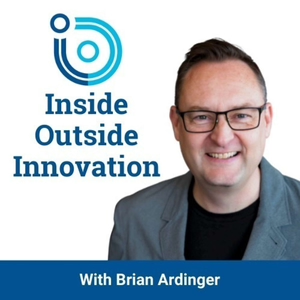
Inside Outside Innovation
Brian Ardinger, Founder of Inside Outside Innovation podcast, InsideOutside.io, and the Inside Outside Innovation Summit
All episodes
Best episodes
Top 10 Inside Outside Innovation Episodes
Goodpods has curated a list of the 10 best Inside Outside Innovation episodes, ranked by the number of listens and likes each episode have garnered from our listeners. If you are listening to Inside Outside Innovation for the first time, there's no better place to start than with one of these standout episodes. If you are a fan of the show, vote for your favorite Inside Outside Innovation episode by adding your comments to the episode page.
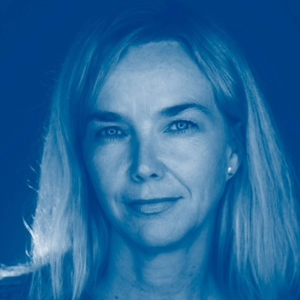
Ep. 245 - Hege Barnes, Director of Americas at Innovation Norway on Green Tech, Clean Tech, EVs, and Startup Innovations
Inside Outside Innovation
04/06/21 • 18 min
On this week's episode of Inside Outside Innovation, we sit down with Hege Barnes, Director of Americas at Innovation Norway. Hege and I talk about the new innovations in green tech, clean tech and electric vehicles, as well as how Norway is working with startups to help grow and support innovation, both inside Norway and around the world.
Inside Outside Innovation is the podcast to help new innovators navigate what's next. Each week, we'll give you a front row seat into what it takes to learn, grow, and thrive in today's world of accelerating change and uncertainty. Join us as we explore, engage and experiment with the best and the brightest innovators, entrepreneurs, and pioneering businesses. It's time to get started.
For the past six years, Inside Outside has been helping innovators and entrepreneurs around the world launch, grow, and thrive. Today we want to celebrate the community and their commitment to innovation. At a time of accelerated disruption and uncertainty, it's never been more important. Thanks for listening, engaging, and being a positive force for innovators everywhere.Interview Transcript with Hege Barnes, Director of Americas at Innovation Norway
Brian Ardinger: Welcome to another episode of Inside Outside Innovation. I'm your host Brian Ardinger, and as always, we have another amazing guest. Today with me is Hege Barnes. She's the Regional Director for Americas at Innovation Norway. Welcome Hege.
Hege Barnes: Thank you. I'm excited to be here.
Brian Ardinger: Hey, we're excited to have you as well. We got connected after the Will Ferrell Superbowl ad for GM, where Will declared that he was coming after Norway. And so, we wanted to set the record straight and go straight to the source and see what's actually happening when it comes to the world of Innovation in Norway. So, what is Innovation Norway?
Hege Barnes: Yeah, the whole EV campaign with Will Ferrell was sort of funny though. And we were very, very happy to tag along in that and sort of play along and have some fun. But it is actually true the way that we develop the country and the green innovations, our slogan is Powered by Nature. You that's how we live and that's how we develop our destination.
But Innovation Norway. Yeah. It's the government entity for trade and industry. So, we are sort of the trade council Invest in Norway. We are the tourist boards and the development agency for Norway. We help companies from birth to success, the growth, the global success. So, we have offices all over Norway and in 30 countries I think, all over the world. We work very efficiently within the unique sort of competence areas that we have in Norway, where we see that we are stronger than have competitive advantages.
And then we matched that with the opportunity areas in the markets we are in. So, I'm representing America. Ee look at what's happening in the US, Canada, and Brazil in particular. Looking at all the developments and matching that with what companies and where we can compete and use our resources efficiently.
Brian Ardinger: That makes a lot of sense. And obviously, probably a lot of us aren't familiar with everything that's going on within Norway, where you hear of, you know, green tech and clean tech and a lot around the electric vehicles. I think you're the largest market share of electric vehicles in the world. And I believe you're also expanding into other areas like the first, fully electric autonomous container ship. So, what's happening in Norway that makes it this destination or a testination for some of the new technologies when it comes to green and cleantech.
Hege Barnes: Based on again, what I said, it it's like this powered by nature sort of mentality that we have after we discovered oil and became this big offshore industry. We are now saying that we need to move beyond that. We need to transition from an industry heavily dependent on fossil fuel into new green technologies, into new greener solutions. So, in addition to the whole offshore industry sort of technology and deep insights that we have, we also always been a seafaring nation and shipbuilding nation.
So, the whole Maritime’s there, the whole Innovation above the water and underwater has been aquaculture has been sort of core of who Norway is and our industry and the development that we've had. We live in a big country with a lot of space, but we had to innovate to sort of survive.
And we built up the industry and we built our communities, basically the whole destination development over the last few years with this, the sort of as a fundament and we are a destination or a country that's full of smart engineers, you know. Engineers that are used to working in even harsh conditions, y...
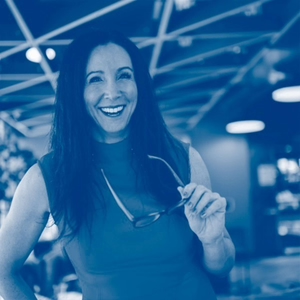
Ep. 240 - Tamara Ghandour, Author of Innovation is Everybody's Business on Building Your Innovation Muscles
Inside Outside Innovation
03/02/21 • 26 min
On this week's episode of Inside Outside Innovation, we sit down with Tamara Ghandour, Author of Innovation is Everybody's Business. Tamara and I talk about innovation, what it means today in today's changing environment, and what individuals and teams can do to build their innovation muscles. Let's get started.
Inside Outside Innovation is a podcast to help new innovators navigate what's next. Each week, we'll give you a front row seat into what it takes to learn, grow, and thrive in today's world of accelerating change and uncertainty. Join us as we explore, engage, and experiment with the best and the brightest innovators, entrepreneurs, and pioneering businesses. It's time to get started.
Interview Transcript with Tamara Ghandour
Brian Ardinger: Welcome to another episode of Inside Outside Innovation. I'm your host, Brian Ardinger and as always, we have another amazing guest. Today we have Tamara Ghandour. She's the Author of Innovation is Everybody's Business: How to Ignite, Scale, and Sustain Innovation for Competitive Edge.
You also have a podcast called Inside Launch Street, which I had great opportunity to be on last week when we recorded. And we said, Hey, let's get you on our show and let's share the community. So welcome.
Tamara Ghandour: Thank you, Brian, it's good to see you again. It's been so long.
Brian Ardinger: It's nice to have you on our show. You know, obviously our audience is probably overlapped to some degree, but I thought it'd be an important to get you on our show to talk a little bit about what you're seeing out there in the world of innovation.
And one of the reasons I liked your book and some of the stuff that you're doing...it's not just about the people, it's about the mechanics behind it and the blocking and tackling, and you even have an Innovation Quotient Edge Assessment that people can go through to find out how they can be coming an innovator and that.
Tamara Ghandour: We believe very strongly, and I think science has also shown us that everybody has the ability to innovate. I've been in innovation 25, I don't know so many years, I can't even count now, but you know, this because you're in it too. There was a lot of focus on the process and the initiatives and the kind of structure of innovation. But what I kept seeing time and time again, is that those efforts failed.
And when I really kind of dug into it, what I really realized is that they're failing because they weren't focusing on the people side. Like how do we as humans innovate? How do we unlock that in ourselves and our teams? How do we tap the power of diversity of thinking. How do we drive it from the inside to the outside, to the culture and kind of bubbling up from there.
So I think over the years, that's why our business has transformed into what it is. And why its been successful is because we get people at an individual anda team level to recognize their power of innovation and how to apply that in their daily world. And then from there, the initiative and the culture and the process and all that kind of follow, but I'm sure you've heard this too Brian.
It's like, I can't tell you the number of times I got a phone call from a client who says I've invested a lot of money in whatever the latest and greatest innovation philosophy is, and my team's not doing it. What do I do to get them to do it? And there's always this kind of, you know, awkward silence of, well it's not that you need to do something to connect them to the process. It's that you need to do something to connect them to themselves and how they innovate.
Brian Ardinger: Well, and that's a very important point. I think a lot of people think that innovation is that mad scientist or that founder, the only way you can innovate... So the fact that, we talk about this too, where you don't have to be a founder to be innovative. And, you know, first of all, it helps to define what innovation is for your company. And it's not just creating the next Uber or the next Twitter, but it can be just as simple as, Hey, I've seen a problem in our way we process things. How do we go about making it better?
And so that's what I liked about the assessment. Is it allowed everybody to play a role in innovation because I think everybody does have a role to play in creating new value in an organization.
Tamara Ghandour: Actually, I want to highlight something you said, because I think it's so important. You said that innovation doesn't have to be the next, like Uber, Twitter, Airbnb. I think we put a lot of false pressure on ourselves to make innovation this big blue skies, disruptive thing, but, and I'm sure you've seen this in your work. ...
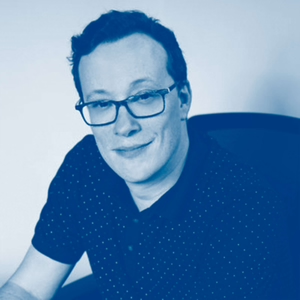
Ep. 170 - Lean Analytics Author & Highline BETA’s Ben Yoskovitz on Corporate Startup Co-Creation
Inside Outside Innovation
10/22/19 • 19 min

Innovative Design & Creative Process with Hussain Almossawi, Author of the Innovator's Handbook
Inside Outside Innovation
09/06/22 • 14 min
On this week's episode of Inside Outside Innovation, we sit down with Hussain Almossawi, author of the Innovator's Handbook. Hussain and I talk about the common misconceptions about innovation and how some of the best brands in the world approach design and the creative process let's get started.
Inside Outside Innovation is the podcast to help new innovators navigate what's next each week. We'll give you a front row seat into what it takes to learn, grow, and thrive in today's world of accelerating change and uncertainty. Join us as we explore, engage and experiment with the best and the brightest innovators, entrepreneurs, and pioneering businesses. It's time to get started.
Interview Transcript with Hussain Almossawi, Author of the Innovator's Handbook
Brian Ardinger: Welcome to another episode of Inside Outside Innovation. I'm your host, Brian Ardinger. And as always, we have another amazing guest. Today, we have Hussain Almossawi. He is the author of a new book called The Innovator's Handbook: A Short Guide to Unleashing your Creative mindset. Welcome Hussain.
Hussain Almossawi: Thank you. Pleasure to be here. Thanks for having me.
Brian Ardinger: You are an award-winning designer, creative director, consultant. You work with companies like Nike and Apple and Google and, and many other well-known brands. I think I'd love to start the conversation with are these companies that you've worked with, that we know as creative and innovative as we think they are. Or do they struggle with innovation, like the rest of us?
Hussain Almossawi: Innovation is a process. And it's all about the mindset. What I really saw in these companies was we do see this big and huge brands with maybe like thousands of employees that work for them. The reality is that it's all made up of small teams. And these small teams are made up of five or six people.
And that's where like innovation happens at the core of those companies. What I really saw in these companies was failure after failure, after failure. Trying to reach to a vision that was set. And then throughout that process and throughout that journey being flexible and going from point A to B to C. And having that flexibility to move forward and push things forward. And that's really where innovation happens.
Brian Ardinger: It's pretty interesting. And we'll maybe dig into some of the examples and that, from what you've seen, that works and that. But you've got a new book out. Same time as my book, it's called the Innovator's Handbook. I love the design of it. It's a square book. Which is kind of unique to the marketplace and that. So, you spent a lot of time and care in the design and creativity of the book. So, I really appreciate that. But I wanted to dig into the content. Talk us through why somebody should pick up a book on innovation when there's so many out there. What makes this one different?
Hussain Almossawi: Sure. So, so for me as a designer and like growing up as an aspiring designer, I always looked at innovation as just like everybody else as something that really wows you. And is something that's amazing.
And you want to take parts in it and you want to innovate and become an innovator. But at the same time, you kind of feel lost and don't know how to do it. So, it just feels very overwhelming, especially when you're first starting out. Throughout my career, working with these different companies, working with amazing teams and brilliant minds.
What I wanted to do was to kind of break it down into simple insights that help shift your mindset when you're innovating. And innovation isn't supposed to be complex or difficult or hard. There are small things that you can do or understand that will allow you to, to think outside the box. For example, I'm speaking about myself, from my perspective. When I was designing and trying to innovate growing up, I always wanted to reinvent the wheel.
I always wanted to do things very different, but that's not the case with innovation. With innovation, you can take things that already exist, see how you can evolve them. Take two different products that exist in the market. See how you can bring them together. There's always room for improvement. So this idea and concept of doing something that is groundbreaking and never done before, that's not really true with innovation. But it seems that way, especially for young designers.
I mean, my book is geared towards young designers and aspiring designers, fresh out of college. And I want to share those perspectives and things that I saw that I wish I knew like 15 years ago. So that's like one thing. Do you evolve a product? Do you act or do you react. Do I come up with a groundbreaking produc...
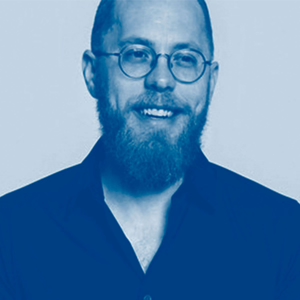
Inside Innovation & Focused Execution: Replay with Voltage Control's Douglas Ferguson
Inside Outside Innovation
08/16/22 • 13 min
In this episode, Brian Ardinger talks with Douglas Ferguson, founder of Voltage Control, a company focused on design sprints and getting new products to market. Douglas tries to look at the product as a whole unit and is convinced that ideas are worthless. It’s more about focused execution. Douglas brings an operators viewpoint, as he moves into consulting and thinking about Innovation from a broader perspective.
Brian and Douglas discuss some of the problems companies face, when building from within, including the desire to standardize. Companies try to jam everything together and avoid focusing on customers’ needs. For example, AT&T buys other company's services and then takes them to market. With this strategy, AT&T will never be able to provide a superb service, because they are so far from the consumer.
When companies try to innovate, often the problem is putting a lot of resource constraints on projects. Douglas uses a framework called Eco Cycles to view the innovation processes. Projects move from birth to maturity to creative destruction to rebirth. In between, there is a rigidity trap and poverty trap. Many big company projects get stuck in that poverty trap.
Douglas also highlights an interesting article from Josh Baer @CapitalFactory called the Texas manifesto. In the article, it explains that Austin will never be a Silicon Valley, but that to succeed Texas needs to connect their four major cities. With that aim, Josh and others load up a bus with VCs, startups, and mentors and travel to a Texas city each month. Check it out.
Austin is starting to see organizations mature and more second and third-time entrepreneurs taking more swings at bat. However, startups doing big bold things and raising large amounts of capital are still getting sucked out to Silicon Valley.
To contact Douglas and read about Voltage Control check out Voltagecontrol.com For more content like this, check out Brian's interview with Teresa Torres at Product Talk
(REPLAY OF INTERVIEW - Oct, 2018)
FREE INNOVATION NEWSLETTER & TOOLS
Get the latest episodes of the Inside Outside Innovation podcast, in addition to thought leadership in the form of blogs, innovation resources, videos, and invitations to exclusive events. SUBSCRIBE HERE
You can also search every Inside Outside Innovation Podcast by Topic and Company.
For more innovations resources, check out IO's Innovation Article Database, Innovation Tools Database, Innovation Book Database, and Innovation Video Database.
Also don't miss IO2022 - Innovation Accelerated in Sept, 2022.
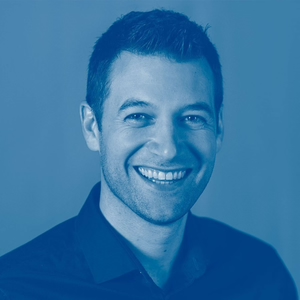
Developing Workspaces that Foster Creativity with Doug Shapiro, OFS's VP of Research and Insights
Inside Outside Innovation
08/23/22 • 22 min
On this week's episode of Inside Outside Innovation, we sit down with Doug Shapiro, VP of Research and Insights at OFS. Doug and I talk about some of the trends in office design, the importance of developing workspaces that foster creativity, and some resources that you can use to plan both your work and your home environment. Let's get started.
Inside Outside Innovation is a podcast to help new innovators navigate what's next. Each week, we'll give you a front row seat into what it takes to learn, grow, and thrive in today's world of accelerating change and uncertainty. Join us as we explore, engage and experiment with the best and the brightest innovators, entrepreneurs, and pioneering businesses. It's time to get started.
Interview Transcript with Doug Shapiro, VP of Research and Insights at OFS
Brian Ardinger: Welcome to another episode of Inside Outside Innovation. And I'm your host, Brian Ardinger. We have another amazing guest was always. Today we have Doug Shapiro. He is the VP of Research and Insights at OFS, which is a sustainable office furniture manufacturer. And also, the host of a podcast called Imagine a Place. So welcome to the show, Doug.
Doug Shapiro: Hey, thanks. Super excited to be here.
Brian Ardinger: I'm excited to have you, because you know oftentimes on our show, we talk a lot about innovation and talk about product design. And I'm fascinated by your background in this idea of place design. And designing environments that can be innovative or creative and spur that. So, I wanted to have you on the show on that. I think I wanted to start with the first question, how has the idea of place and especially the workplace changed over the years that you've worked in this space?
Doug Shapiro: Well, the idea of place has evolved as we've kind of taken in also new data around not just an understanding of what place does first. But even new data around how place affects us from a health standpoint. From a mental standpoint, we understand the impact of biophilia on our brains and things like that, that we really haven't understood as deeply in the past.
So, there's some scientific evolution and then there's also cultural evolution of really understanding the purpose of place and what it means for our workforce. I mean, we've all kind of gone through that here recently, where it just used to be this thing you had to go to every day to get your work done.
And of course, that's evolved into being much more of a, of a center for collaboration and creativity. That's the part that I'm super passionate about is how does place support creativity. So, I'd love to get into that today with you.
Brian Ardinger: Yeah. Let's talk a little bit about that. So, you know, in the past, you hear a lot about open office complex and, and this idea of collaboration and that. And you seem to have folks that really enjoy that particular way of working. And now you are seeing people, you know, working at their homes and that. What are some of the things that really make a place work for somebody?
Doug Shapiro: The most important word I would say is choice. Because, you know, if you track your activities throughout a day, it's rare that you're gonna spend an entire day engaged in one part of your brain doing that same activity over and over again, right.
If that's the case, you don't really need a lot of choices, but the reality is there's moments where you need peace and quiet. There are moments where you need energy. There are moments where you need to be with others. And then we also have our own neurodiversity about us. I mean, some people are very hyposensitive. And they need high energy environments. And other people are hypersensitive, and they need to be in places that are more relaxed to do their best work.
So, the key is choice. I think that's the way you make environments work for people today. I'm really drawn to this evolution away from knowledge work into creative work. And I think that's a major change we're seeing in workplace today. I think it's really heavily driven by AI and the impact of AI on our jobs. So that's something I'd love to kind of get in with you and explore and see how we're moving from knowledge work to creative work.
Brian Ardinger: So, tell me a little bit about what you're seeing with the clients that you're working with. And the things that you design to make it effective in that particular environment.
Doug Shapiro: I think it's really, almost like a, a major cultural change to embrace maybe how far we have to go to be great at creative work. I actually, I've thought about this. Knowledge work. That phrase has been around since the fifties. Peter Drucker coined it. And what we're going through today, in fact, I heard this real...
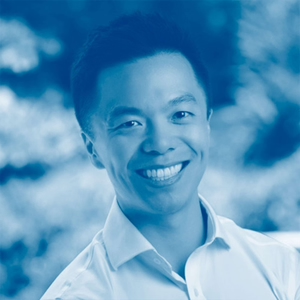
Intersection of Arts and Innovation with Clive Chang, Lincoln Center's Chief Advancement and Innovation Officer
Inside Outside Innovation
08/02/22 • 23 min
On this week's episode of Inside Outside Innovation, we sit down with Clive Chang, Chief Advancement and Innovation Officer at Lincoln Center. Clive and I talk about the intersection of arts and innovation and how people in organizations can embrace new ideas, experiments, and new audiences to create new opportunities and experiences. Let's get started.
Inside Outside Innovation is the podcast to help new innovators navigate what's next. Each week, we'll give you a front row seat into what it takes to learn, grow, and thrive in today's world of accelerating change and uncertainty. Join us as we explore, engage, and experiment with the best and the brightest innovators, entrepreneurs, and pioneering businesses. It's time to get started.
Interview Transcript with Clive Chang, Chief Advancement and Innovation Officer at Lincoln Center
Brian Ardinger: Welcome to another episode of Inside Outside Innovation. I'm your host, Brian Ardinger. And as always, we have another amazing guest. Today we have Clive Chang. Clive is the Chief Advancement and Innovation Officer at Lincoln Center, which is the world's largest and best-known cultural venue in the world. Housing things like the Metropolitan Opera, New York Philharmonic, New York City Ballet, American ballet Theater, and the list goes on and on and on. So, Clive thank you for coming on the show.
Clive Chang: Thanks so much for having me great to be here.
Brian Ardinger: Well, I'm so excited to have you on this show because the arts and innovation are not a topic that's often covered. And you've got such an interesting background and, and role when it comes to this space.
From my understanding your background, you're a musician, you're a composer, you're a businessperson. You used to work at Disney, and now you lead Lincoln Center's innovation efforts. How did you get interested in this innovation space and helping companies and organizations innovate better?
Clive Chang: Thanks for asking. You know, I am a classically trained musician. I come from a long history of being an artist. And I also come from sort of a multitude of different forces and influences in my life. One of them being strict Asian parents, who forbade me from studying music in college for fear that it would never lead me to a fruitful career. And so, I was also rooted in very practical sort of traditions growing up.
And really serendipitously found this intersection of business and art through pursuing studies in both fields. I will say also that as I was in my formative years and college and shortly thereafter, I was also seeing a lot of arts institutions financially flailing, right? Orchestras going bankrupt, et cetera. So that really piqued my interest.
And I saw this opportunity that somebody who was trained from the ground up both on the creative side and on the business side could really fill for the world. And that was really helping creative and artistic organizations thrive. And I sort of found that niche quite early on and fueled my further training onward to really pursue that.
And innovation, I think really is something opportunistic that I ran into. Right. And you don't get very many nonprofit art CEOs that say outwardly that innovation is their top priority. Right. And so, coming across Henry Timms, his appointment and his not only external commitment to innovation, but also his track record of having done it in the sector prior to coming to Lincoln Center was just too good to be true. And so, I very happily came on and have been really enjoying working with him to really reimagine some things in the sector.
Brian Ardinger: It is pretty interesting when you think about artists and creatives, you automatically think of them as innovative type of spirits. Where, you know, they're constantly doing new and interesting kind of things, but oftentimes that doesn't seem to apply to the organizations themselves.
Most arts organizations have been around for, you know, years or even centuries with similar business models and similar ways of displaying the arts and that. Why is it so important for institutions to level up today and think more about innovation as a core competency?
Clive Chang: Yeah, you are so right. It's almost astounding that organizations that house so many brilliant creative outside of the box talents fail to really make full use of them in an institutional and organizational context.
I would consider organizations like Lincoln Center legacy institutions. And while Lincoln Center is only about 60 years old, a lot of the art that's presented on this campus is centuries old, right? Very much rooted in tradition. And I think that's probably one keyword that ends up being a bit of a fallback or a crutch, that many arts organizations use, especially ones t...
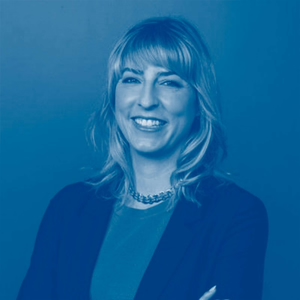
Innovation Models and Creative Problem Solving: IO2020 Replay with Karen Holst, Author of Start Within
Inside Outside Innovation
07/26/22 • 24 min
In honor of our upcoming IO2022 Innovation Accelerated Summit, which is happening September 19th and 20th in Lincoln Nebraska, thought it'd be nice to pull some of the best interviews and sessions from our IO2020 Virtual Event. So, over the next few weeks, check out some of our amazing speakers and grab a ticket for the upcoming event. We'd love to see you there. Tickets and more information can be found IO2022.com. And now back to the show.
Inside Outside Innovation is a podcast to help new innovators navigate what's next. Each week, we'll give you a front row seat into what it takes to learn, grow, and thrive in today's world of accelerating change and uncertainty. Join us as we explore, engage and experiment with the best and the brightest innovators, entrepreneurs, and pioneering businesses. It's time to get started.
Interview Transcript with Karen Holst, Author of Start Within
Brian Ardinger: Karen Holst is the Author of Start Within. Karen and I met a couple months ago. Probably in mid pandemic. She had me on her show. She has a LinkedIn show that she hosts and you're always bringing on some amazing guests. I had a great opportunity to talk to her and talk about what's going on in innovation and entrepreneurship, and this intersection between corporate and startups and such. I'll turn it over to Karen to talk a little bit more.
Karen Holst: Great. Thank you. I am coming in from New Zealand. I originally was in San Francisco and then moved to Montreal for a couple years and still had San Francisco based work. So, I never really changed my profile in LinkedIn. It was very confusing. I had these, this double life going on, where I was spending half my year in California and half in Montreal. And then had the opportunity to come to Auckland and, and it’s been an adventure, especially given the, the time that we're in right now.
So, thank you for joining and I appreciate everyone sharing why they're joining here today. And I, I will tell you what I get excited about when it comes to innovation. It is unlocking people and doing this work and oftentimes that can be myself when I feel blocked up or maybe a little over my head in what I'm trying to do. Or it might be the team members and the people I'm consulting and bringing along and doing this work. So that's what I'm here to talk about today.
Quick introduction on myself. My background, I had started a company after acquisition. I joined the California Department of Education and had this moment of what does it mean to innovate in a large organization, a state agency, no matter. And that being very different and that leading to writing the book. I joined IDEO and I also teach through LinkedIn learning. So that's the quick and dirty on me.
I want to share a quick story on the importance of being bold and what it means to innovate and be the person that's igniting that in others. And this goes back to my ed tech startup. I was a co-founder in my early twenties and definitely feeling a little over my head.
We were going after another round of funding. And I really needed to catalyze teams to think differently and start solving new challenges. And I had reached out to a woman that I, I didn't know, but she was someone I really respected in the corporate world and had grown businesses. She was gracious enough to give me 15 minutes of her time.
And I sat down with her in a video call and said, explain where I was coming from and wanting to, you know, ignite passion and innovation in others. And what advice did she have for me in leading those teams? And she shared out of the gate, she said, don't bake goods and bring them into the office. You'll be seen as the mother caretaker, you know, the baker instead of the leader.
And I was floored by that response. One, I'm not a baker. I would not put anyone into the, the task of trying to eat something that I make. I, I can do maybe a simple cake with a mix and cookies. But that is not something I would pride and force on my colleagues.
But what I took out of that comment was, you know, assimilate. Fit in. And I looked around and I had, you know, an all-male board from our investment. And we were still looking to diversify our team and hadn't quite landed on how to do that. And so, I did slip a bit in my, what I think was my superpowers and being myself.
And that is one of the takeaways is, you know, being yourself and acknowledging your strengths is a big part of this work and innovating. And also doing that with others when you're leading others. So, to be yourself with the caveat of, but better. And I think what all of this leads to is whether you're the optimistic yaysayer and that's me, or the kind of cross your arm, realistic, you know, pointing and poking holes at problems. All of those are great perspectives to have. It's trying to find that balance.
And it's in y...
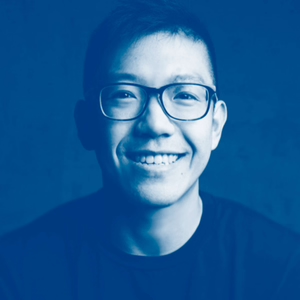
Using Uncertainty to Drive Innovation in World-Class Restaurant R&D Teams: IO2020 Replay with Vaughn Tan, Author of The Uncertainty Mindset
Inside Outside Innovation
07/19/22 • 26 min
In honor of our upcoming IO2022 Innovation Accelerated Summit, which is happening September 19th and 20th in Lincoln Nebraska. Thought it'd be nice to pull some of the best interviews and sessions from our IO2020 virtual event. So, over the next few weeks, check out some of our amazing speakers and grab a ticket for the upcoming event. We'd love to see you there. Tickets and more information can be found at io2022.com. And now back to the show.
Inside Outside Innovation is podcast to help new innovators navigate what's next. Each week, we'll give you a front row seat into what it takes to learn, grow, and thrive in today's world of accelerating change and uncertainty. Join us as we explore, engage and experiment with the best and the brightest innovators, entrepreneurs, and pioneering businesses. It's time to get started.
Interview Transcript with Vaughn Tan, Author of The Uncertainty Mindset
Susan Stibal: Today Vaughn Tan will share learnings from internationally renowned cutting-edge restaurant, R and D teams on how to prepare for uncertainty and respond to it with grace and innovation. Vaughn is a London based strategy consultant, author, and professor. Vaughn's book, The Uncertainty Mindset, is about how uncertainty can be used to drive innovation and adaptability. Vaughn is also an Assistant Professor of Strategy and Entrepreneurship at University College London, School of Management. So Vaughn, I'll turn it over to you.
Vaughn Tan: Thanks very much for having me and thanks also for everyone who's here. Thanks for joining me today. I just want to say a few things about myself, just as context.
I was born and raised in Singapore, but these days, as Susan said, I'm a strategy professor at UCL school of management. I teach courses in how design thinking can update and. Conventional approaches to strategy and management. So I used to live in London, but at this very moment in Corona time, I'm physically located in a very rural part of France in a mountainous and volcanic region called the of van.
And this is basically my apology in advance. If there are any internet connectivity problems that develop along the way. So, in any case, my focus as a consultant or researcher, and as an author is I try and understand how to design organizations that are more innovative. And more resilient to uncertainty.
And these organizations include businesses, nonprofits, teams, communities. I'm particularly interested as I think the book's title and what I've just said may suggest in the role that uncertainty plays in making businesses better at doing innovation work. And I think that's maybe a little bit counterintuitive. And I'm going to unpack that a little bit more in the rest of this talk.
I got here by quite a circuitous path. Quite literally a decade ago, late in 2010, I found myself in a basement kitchen of a restaurant in Washington, DC. And I was just dodging kitchen porters while watching a team of R and D chefs come up with a menu of new dishes for a restaurant. And the owner and the head chef of that restaurant group is the Spanish chef Jose Andres, who you may know because of his philanthropic disaster relief activities.
There's an arrow pointing at Jose, right there. This is Jose's philanthropic side project, you know, which eventually turned into a huge one. If you're in the US, I think he's quite famous there. People know about him. It's called World Central Kitchen. And what they do is they create field kitchens for emergency food relief during natural and, and other disasters.
The thing that many people don't know is that World Central Kitchen is able to spin up these field kitchens to produce hundreds of thousands of meals a day very quickly because, it's how they organized. Right. So they use a very unusual way of thinking about how to design their teams, to be able to go from a very small, permanent team, to a large operation in any particular disaster setting that they choose to go into because of how they're organized.
And how they're organized is actually about what I call The Uncertainty Mindset. Because Jose's way of thinking about how his teams get organized for his for-profit organization. Think food group is actually the same way that he infused into what World Central Kitchen does, So, I'm going to come back to this in a little bit.
I wanted to say also a little bit about how I came to study culinary innovation. It was all by accident. I did my PhD at Harvard Business School. And when I went in, I was interested in understanding how to organize innovation teams. And this focus for me was because of my experiences before starting the PhD. I'd just come from working at Google in California. And while I was there, I worked on some really unusual teams doing quite interest...
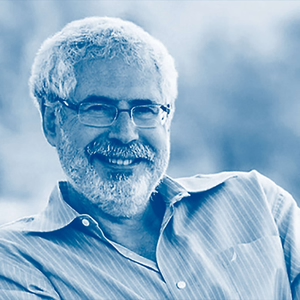
Ep. 216 - Steve Blank, Father of Modern Entrepreneurship & Author of the Startup Owner's Manual on Lean Startup, Work, Education, & Government
Inside Outside Innovation
07/13/21 • 22 min
On this week's episode of Inside Outside Innovation, we sit down with the legendary Steve Blank. Steve is the author of the Startup Owner's Manual and is also known as father of modern entrepreneurship. Steve and I had a chance to talk about the evolution and changes since the inception of the lean startup movement, as well as some of the coming changes we see in the world of work, education, government, and more. Let's get started.
Inside Outside Innovation is the podcast that brings you the best and the brightest in the world of startups and innovation. I'm your host Brian Ardinger, founder of insideoutside.io, a provider of research events and consulting services that help innovators and entrepreneurs build better products, launch new ideas, and compete in a world of change and disruption. Each week we'll give you a front row seat to the latest thinking, tools, tactics, and trends in collaborative innovation. Let's get started.
Brian Ardinger: Welcome to another episode of Inside Outside Innovation. I'm your host, Brian Ardinger. And as always, we have another amazing guest. Today with me we have Steve Blank. Welcome to the show, Steve.
Steve Blank: Thanks for having me, Brian.
Brian Ardinger: Steve. I'm so excited to have you on board because you have led the way when it comes to lean startup and all the methodologies around that. For the two people in my audience who haven't heard of you, I'm going to give a quick bio. You're a serial entrepreneur turned educator. You're known as the father of modern entrepreneurship. You've helped create the lean startup movement, which has really changed the way startups are built, how entrepreneurship is taught, how science is commercialized, how companies and governments are looking at this whole space. You're author of a couple of books called The Four Steps to the Epiphany and the Startup Owner's Manual.
Both of which I recommend highly to my clients and startups. You also teach at Stanford and Columbia and the list goes on and on. So, I'm super excited to have you on the show. But I thought we'd start off going back to 2013. You wrote an article in the Harvard Business Review titled why the Lean Startup Changes Everything. And it was one of those quintessential articles that I think kicked off a movement and kicked off a lot of conversation around innovation. What surprised you the most since you wrote that article and what surprised you during that journey?
Steve Blank: That's a great question. You know, the lean startup big insight was that the startups weren't the smaller versions of large companies. For the seven years, since the HBR article, we've discovered that companies aren't larger versions of startups. Meaning that corporations started adopting startup methodologies because they were being disrupted by startups and globalization and China, and then new technology and said, Hey, we can run incubators and accelerators and we could just operate just like that.
But in fact, what I think we've created in the last seven years is mostly innovation theater, rather than innovation in large companies. And not because anybody is being stupid, but because we're learning, what people have been talking about for 20 years, is that 99% of your company is actually doing execution. That is executing that known business model. And all the processes and procedures and OKR and KPIs are designed for execution. But those things tend to strangle innovation in its crib.
And unless you're going to fix all those processes. And that is specifically create what was labeled in the 20th century, the ambidextrous organization, that is one that could innovate and execute. You're going to end up having great posters and coffee cups about innovation, but not much innovation because what'll happen is, you'll create these islands of innovations as innovation activities, but they really won't be connected to the rest of the corporate infrastructure. The output of those incubators will die. And it's again, not due to malice, but due to the fact that you really need to make some more fundamental changes, if you want that to happen. Or you just need to acquire companies rather than try to do it internally.
Brian Ardinger: It speaks to an interesting point. So, for years, we've seen major shifts coming on the horizon, whether it's the rise of startups, accelerating technologies. Now we have a pandemic. Why do you think companies are still getting caught flat footed when it comes to disruption and being better able to handle the new next?
Steve Blank: If you really think about who runs large companies, if you're great at managing hundreds or thousands or tens of thousands of people, you're a world-class executer. There are very few companies that are still run by their innovators or by innovators. You know, the ones tha...
Show more best episodes

Show more best episodes
FAQ
How many episodes does Inside Outside Innovation have?
Inside Outside Innovation currently has 332 episodes available.
What topics does Inside Outside Innovation cover?
The podcast is about Covid, Fintech, Venture Capital, Future Of Work, Management, Real Estate, Ai, Entrepreneurship, Creativity, Design, Design Thinking, Startups, Gaming, Podcasts, Technology, Education, Business and Innovation.
What is the most popular episode on Inside Outside Innovation?
The episode title 'AI, VC, & Data Insights into Corporate Innovation with Thomas Thurston of Ducera Partners' is the most popular.
What is the average episode length on Inside Outside Innovation?
The average episode length on Inside Outside Innovation is 19 minutes.
How often are episodes of Inside Outside Innovation released?
Episodes of Inside Outside Innovation are typically released every 7 days.
When was the first episode of Inside Outside Innovation?
The first episode of Inside Outside Innovation was released on Apr 18, 2016.
Show more FAQ

Show more FAQ